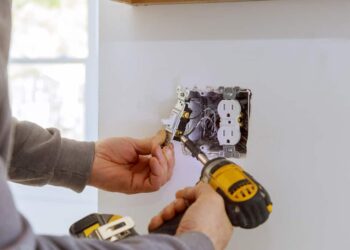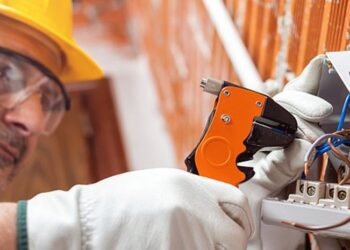Lighting lower than the conventional 120v can help you save money and is excellent for accent or supplemental lighting in your house. As a result of using less power, you may save money. However, its a good thing to understand the concept of low voltage vs. line voltage lighting.
Line Voltage Lighting
The standard voltage for household circuits is known as “line voltage,” and it’s often 120v. Most household appliances, including toasters, cell phones, and televisions, take 120v when plugged into standard wall outlets. The 120-volt system is the norm in the lighting industry. Even though 120v is the norm, 277v (or “line voltage”) is sometimes used.
Some houses are wired with a greater voltage than the standard, which is why the phrase “line voltage” is used to describe it. Due to variations in electrical setups, there is no universal “line voltage.”
Low-voltage Lighting
Low-voltage lighting is standard in particular situations. Most low-voltage lighting operates on 12 to 24 volts of electricity. The installation of a special transformer is required to regulate the current and reduce the standard voltage to these values. Since the transformer can handle the voltage, unique light fixtures aren’t needed for low-voltage systems.
On the other hand, low-voltage lights already have transformers built in so they can be wired into a standard household circuit. You can check that your low-voltage transformer is placed correctly to modernize your electrical panel.
The Pros and Cons of Using Low-Voltage Lights
Low-voltage bulbs are becoming more popular as homeowners realize they save money on power and money at the register by using them.
The intended use of the lights, their placement, the necessary load, and whether or not you want to relocate the fixture are all additional considerations that will determine which option is preferable. Some benefits of low-voltage bulbs include the following:
Energy Conversion.
The majority of folks are interested in this one. Since low-voltage lighting uses less power, it costs less to keep it on.
Movability.
Transferring low-voltage lighting is less hassle than switching over to a line-voltage system. It is why low-voltage outdoor lighting is so widespread.
Moving low-voltage cable is less hassle because electrical rules do not require it to be buried in conduits (metal or plastic tubing that protects wires).
Safety.
As voltage drops, so does the risk of being electrocuted. Since mistakenly cutting the line won’t have the disastrous effects that line voltage could, low-voltage lighting is a fantastic option for gardening.
Low-voltage lights, particularly for outdoor illumination, have many benefits, but they are not without their flaws. The advantages of low-voltage bulbs include the following:
Routine Checks and maintenance.
Especially when dealing with the transformer that makes low-voltage systems possible, it may be challenging to locate professional support with installation, inspection, and maintenance.
Low voltage.
Because of the transformer’s filtering effect, a low-voltage system’s connection may be less stable than one using a line system. The voltage will drop when your circuit is overworked, similar to the restricted load capacity problem.

One frequent analogy is to think of your circuits as a hose, with less water coming out of the end when the water pressure is low.
Why Do My Outdoor Low-Voltage Lights Flash?
A voltage drop or a limited load capability can cause light flickering. The trouble with the transformer can lead to flickering lights because insufficient power is being sent to the bulbs.
However, LEDs are the most preferred under this low power flow to receive the full advantage of your desired lighting. Also, voltage drops when your circuit has too many gadgets drawing too much power.
Find Qualified Electricians
Only attempt installing low-voltage indoor or outdoor lights with professional assistance. Transformer installation is not for the faint of heart.
With the help of professional electricians, you can rest assured that your new low-voltage electrical equipment will be installed in a safe and convenient position.










